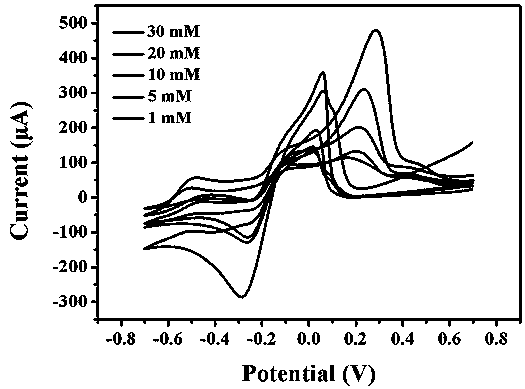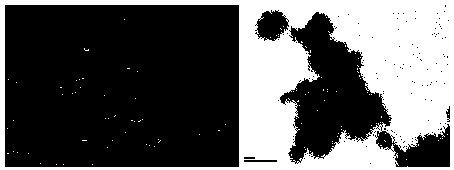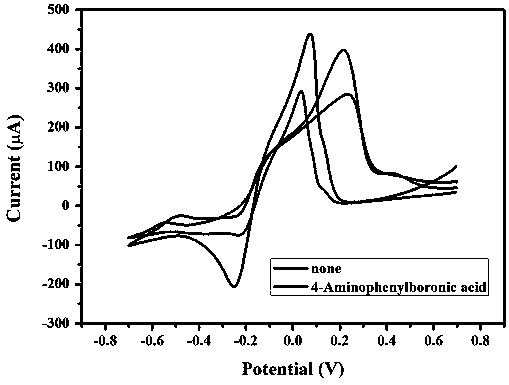Glucose non-enzymatic catalytic sensor and preparation method thereof
A sensor and technology of glucose, applied in the field of non-enzymatic catalytic sensor of glucose and its preparation, can solve the problems of low oxidation selectivity, high cost of non-enzymatic glucose sensor, chloride ion poisoning, etc., and achieve the effect of wide application prospect.
- Summary
- Abstract
- Description
- Claims
- Application Information
AI Technical Summary
Problems solved by technology
Method used
Image
Examples
Embodiment 1
[0023] The three-dimensional gold nanoparticles constructed by porphyrin in this embodiment and the method for measuring the glucose sensor with simulated enzymes are as follows:
[0024] (1) The preparation method of pSC functionalized gold nanoparticles is as follows: put a round bottom flask with a volume of 250mL on an iron stand, add 126mL of ultrapure water and stir, then add 2.8mL of a concentration of 10 -2 mol / L pSC and a concentration of 2.63×10 - 2 mol / L chloroauric acid (HAuCl 4 ) in the dark and stirred for 20 min. Then quickly add 2.8mL concentration of 10 -2 mol / L sodium borohydride (NaBH 4 ), and stopped after two hours of vigorous stirring. During the whole process, it can be observed that the color of the solution changes from light yellow to dark brown and finally to wine red. After the stirring is stopped, transfer the prepared pSC functionalized gold nanoparticles to a brown bottle Store at 4°C until use.
[0025] (2) Method for constructing the thre...
PUM
| Property | Measurement | Unit |
|---|---|---|
| particle diameter | aaaaa | aaaaa |
| particle diameter | aaaaa | aaaaa |
Abstract
Description
Claims
Application Information
 Login to View More
Login to View More - R&D
- Intellectual Property
- Life Sciences
- Materials
- Tech Scout
- Unparalleled Data Quality
- Higher Quality Content
- 60% Fewer Hallucinations
Browse by: Latest US Patents, China's latest patents, Technical Efficacy Thesaurus, Application Domain, Technology Topic, Popular Technical Reports.
© 2025 PatSnap. All rights reserved.Legal|Privacy policy|Modern Slavery Act Transparency Statement|Sitemap|About US| Contact US: help@patsnap.com



